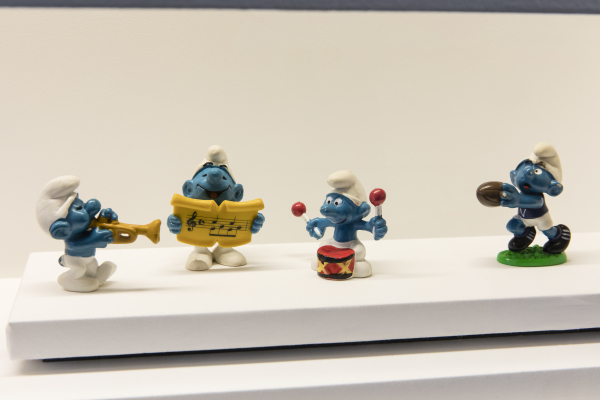
Instantly recognisable for their distinct appearance of blue skin, white clothing and a small stature, Smurfs are a cherished worldwide children’s franchise that began in Belgium in the late-1950s. By the 1980s they were on Australian TV transporting kids into their mythical toadstool village, undertaking death defying quests to defeat the evil wizard Gargamel! After 60 years they’re still around and remain popular today.
The Smurfs were the creation of Belgium cartoon artist, ‘Peyo’, the pseudonym of Pierre Culliford (1928-1992), making their first appearance as secondary characters in 1958. Their popularity skyrocketed after the debut of figurines and a feature film in the 60s-70s. The Smurfs became so iconic in Belgium that they were the country’s official mascot for the 1980 Olympic Games in Moscow.
It was in the 80s that the Smurfs received international recognition and stardom through the famous cartoon duo, Hanna and Barbera, adapting characters into the television show for the American television network, NBC. Today Smurfs are still extremely popular with new movies produced in 2011, 2013 and 2017. New collector’s figurines, merchandise, updated editions of their stories and even theme parks, have been created to introduce the phenomenon to younger audiences and letting big kids relive their childhood through new adventures!
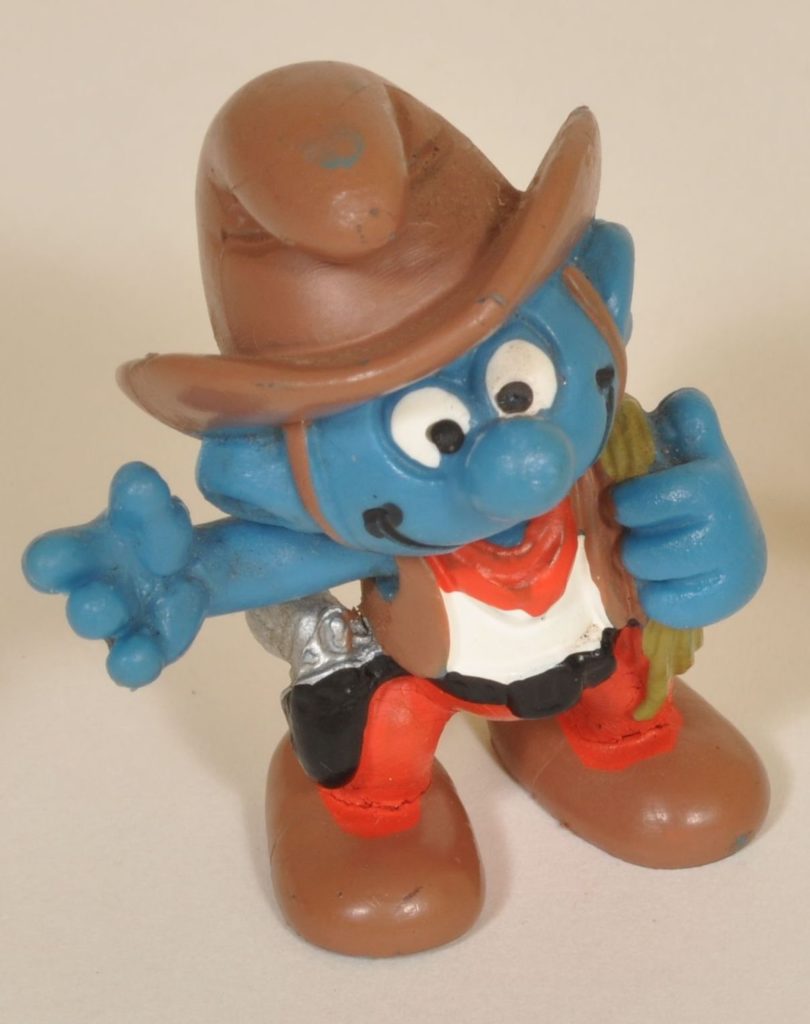
The Museum has in its collection an array of 56 Smurf figurines pursing different careers from doctor to cowboy, magician to carpenter and undertaking various activities from juggling to brushing their teeth, singing to playing tennis.
These figures came into the collection through the large acquisition of Meccano items donated in 2013 by the late Malcolm Booker (1936-2016). His passion for building and collecting Meccano began when he was eight years old, receiving his first well-loved set on Christmas Day, 1942. At the age of seventeen, Malcolm put his love for Meccano on hold to concentrate on his education and pursue a career as a mechanical engineer. He was able to secure a mining engineering scholarship and credits that his years of Meccano building helped him throughout his career to see ‘what things would work and what would not’.
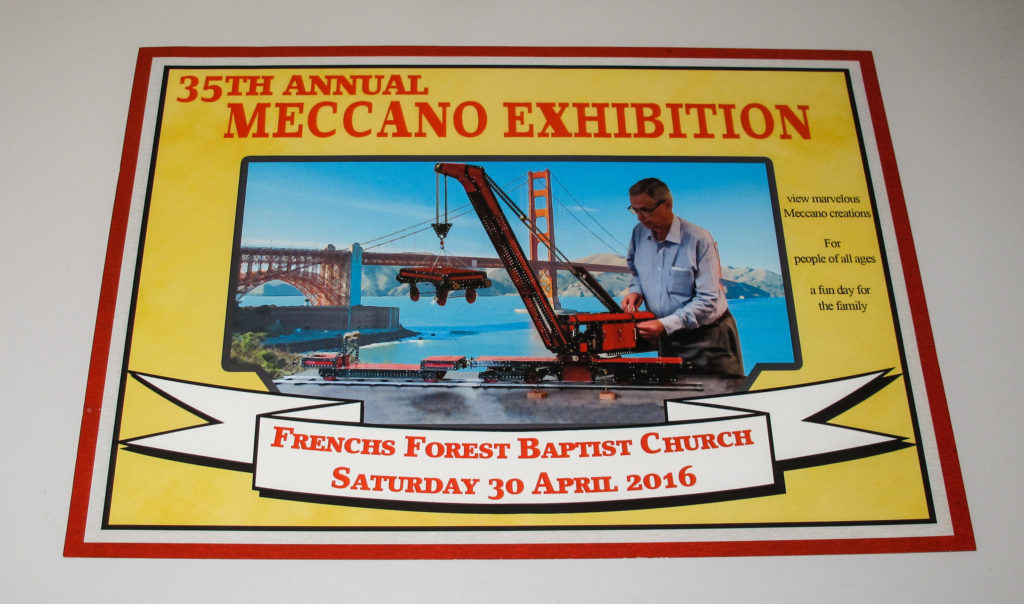
In 1978, Malcolm’s interest in Meccano was re-energised through his three-year-old son’s enthusiasm for the sets. After spending the day with his son at Sydney’s Manly Wharf and riding the Ferris wheel there, his son asked if Malcolm could make a Meccano model of the ride. Not only did Malcolm made an operating model of a Ferris wheel complete with lights, but the family’s collection of Smurf figures were just the right size to make perfect little passengers. Not all the figurines could fit on the ride itself, so the remaining Smurfs were placed in a queue to wait patiently for their turn.
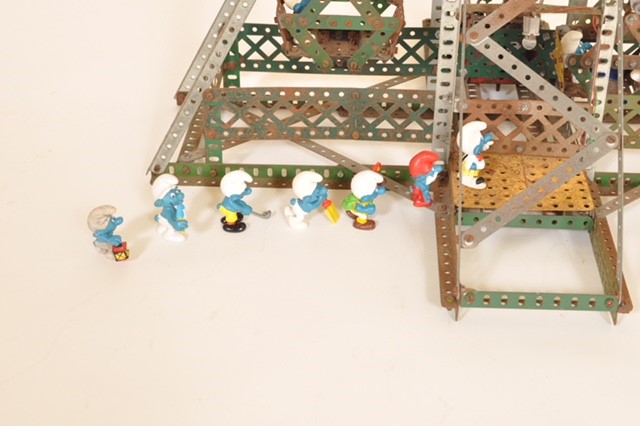
Once Malcom retired from the mining industry, he went on to pursue his passion for Meccano and became a foundation member of the Sydney-based Meccano Modellers Association in 1982, and later President. Well-loved in the community, from 1978 to 2016 Malcom had built 138 Meccano models in total and was nominated the same year for the Golden Spanner award, which is the highest honour in the international Meccano community.
A selection of the Museum’s collection of the Booker family Smurfs are currently on display in our exhibition ICONS: From the MAAS Collection, which features more than 70 celebrated and rarely displayed objects from the Museum’s collection, and considers what makes a museum object an icon in the 21st century. Their inclusion acknowledges how Smurfs have shaped society through popular culture.
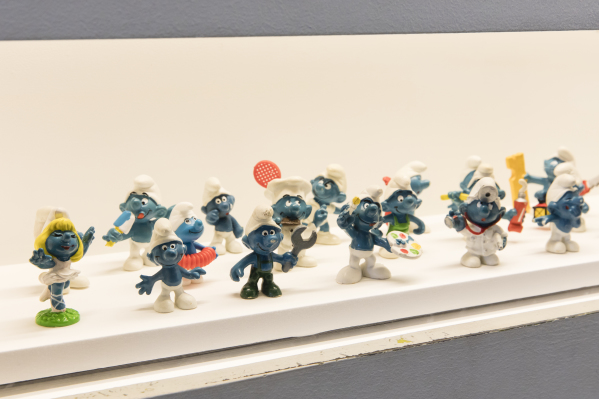
Written by Chloe Appleby, Curatorial Volunteer, working under the supervision of Curator
Margaret Simpson
June 2018
References
Information provided by Malcolm Booker, 2011.
Franquin, (2007), Peyo, Marsu Productions, accessed 4th April 2018, < http://www.franquin.com/amis/peyo_amis.php >.
Schuddeboom. B, Knuddle. K, (2018), ‘Peyo’, Lambiek Comiclopedia, Netherlands, accessed 4th April 2018, < https://www.lambiek.net/artists/p/peyo.htm >.
Smurfs Wiki, (2018) Smurfs Comics, FANDOM, Wikia Inc., USA, accessed 4th April 2018 < http://smurfs.wikia.com/wiki/Smurfs_(comics) >.
World Collectors Net, (2018) Smurfs, World Collectors Net, accessed 4th April 2018 < http://www.worldcollectorsnet.com/features/smurfs/ >.
World Collectors Net, (2018) Smurf History, World Collectors Net, accessed 4th April 2018 < http://www.worldcollectorsnet.com/features/smurfs/history1/ >